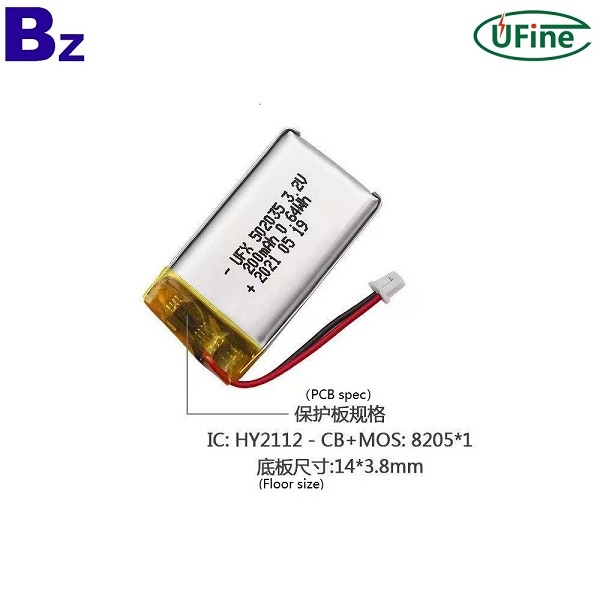The charger of the lithium iron phosphate battery is different from the general lithium ion battery. The highest terminal charging voltage for lithium-ion batteries is 4.2V, and the highest terminal charging voltage for lithium iron phosphate batteries is 3.65V. It is recommended to charge the lithium iron phosphate battery using the CCCV charging method, that is, first constant current and then constant voltage. The recommended constant current is 0.3C. The recommended constant voltage is 3.65V. That is, 0.3C current charging in the constant current process, when the battery voltage reaches 3.65V, use 3.65V voltage constant voltage charging, when the charging current is lower than 0.1C (or 0.05C), stop charging, that is, the battery has overflowed.

Generally, the upper limit voltage of lithium iron phosphate battery is 3.7~4V, and the lower limit voltage of discharge is 2~2.5V. Considering the five aspects of discharge capacity, discharge median voltage, charging time, constant current capacity percentage, and safety, constant current and constant voltage are adopted. Regarding the charging method of lithium iron phosphate batteries, it is reasonable to set the charging limit voltage at 3.55~3.70V, the recommended value is 3.60~3.65V, and the lower limit voltage of discharge is 2.2V~2.5V.
Principles of charging and discharging lithium iron phosphate batteries
The charge and discharge reaction of lithium iron phosphate batteries is carried out between the two phases of LiFePO4 and FePO4. During the charging process, LiFePO4 gradually separates from the lithium ions to form FePO4, and during the discharge process, lithium ions are inserted into FePO4 to form LiFePO4。
When the battery is charged, lithium ions migrate from the lithium iron phosphate crystal to the crystal surface, under the action of the electric field force, enter the electrolyte, then pass through the diaphragm, and then migrate to the graphite surface. The crystal passes through the electrolyte and then is embedded in the graphite lattice. At the same time, electrons flow through the conductor to the aluminum foil collector of the positive electrode, flow through the tabs, battery positive electrode, external circuit, negative electrode, and negative electrode to the copper foil collector of the battery negative electrode, and then flow to the graphite negative electrode through the conductor to balance the negative electrode charge. After the lithium ions are deintercalated from the lithium iron phosphate, the lithium iron phosphate is converted to iron phosphate.
When the battery is discharged, lithium ions are deintercalated from the graphite crystals, enter the electrolyte, and then pass through the diaphragm, migrate to the surface of the lithium iron phosphate crystal through the electrolyte, and then reinsert the lithium iron phosphate grid. At the same time, electrons flow to the copper foil current collector of the negative electrode through the conductor, flow to the aluminum foil current collector of the battery positive electrode through the tab, battery negative electrode, external circuit, positive electrode, and positive electrode, and then flow to the iron phosphate through the conductor to balance the positive electrode charge.



